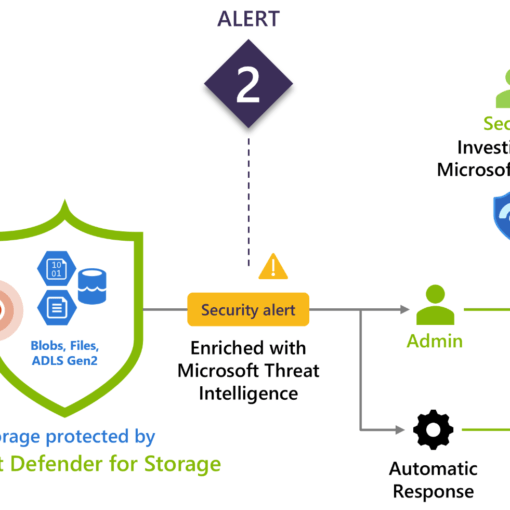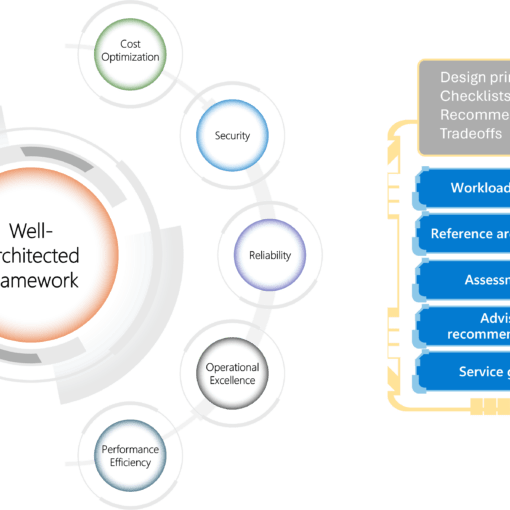Updated – July 2024

In the world of cloud computing, scalability is paramount. Businesses need to ensure that their applications can handle varying loads without compromising performance or incurring unnecessary costs. Azure Virtual Machine Scale Sets (VMSS) offer an elegant solution to this challenge, providing a way to deploy and manage a set of identical, auto-scaling VMs. This deep dive will explore the ins and outs of Azure VM Scale Sets, from basic concepts to advanced configurations.
Why Azure VM Scale Sets?
- Auto-scaling: Automatically adjust the number of VMs based on demand.
- High Availability: Distribute VMs across availability zones and fault domains.
- Easy Management: Simplify the deployment, management, and update of VMs.
- Cost Efficiency: Scale in and out based on load, optimising resource utilisation and cost.
Key Concepts
- Definition and Components
- Scaling Mechanisms
- High Availability and Fault Tolerance
- Custom VM Images and Configuration
- Integration with Other Azure Services
- Monitoring and Maintenance
1. Definition and Components
Azure VM Scale Sets are an Azure compute resource that you can use to deploy and manage a set of identical VMs. These VMs are distributed across fault domains and update domains to ensure high availability. Key Components:
- Model: The configuration of VMs, including size, OS, disk configuration, and more.
- Instance: Individual VMs in the scale set, created based on the model.
- Load Balancer: Distributes traffic across VMs in the scale set.
- Autoscale Settings: Rules that define how the scale set should respond to changes in load.
2. Scaling Mechanisms
Azure VM Scale Sets offer both manual and automatic scaling options. Automatic Scaling:
- Horizontal Scaling (Scale Out/In): Add or remove VM instances based on metrics such as CPU usage, memory usage, or custom metrics.
- Vertical Scaling: Change the size of VM instances (not commonly used due to disruption).
3. High Availability and Fault Tolerance
Azure VM Scale Sets are designed with high availability in mind. They distribute VMs across multiple fault domains and update domains within a region, ensuring that the application remains available even if a subset of the infrastructure fails. Key Features:
- Fault Domains: Group of VMs that share a common power source and network switch.
- Update Domains: Group of VMs that are updated together during maintenance.
4. Custom VM Images and Configuration
VM Scale Sets support both platform images provided by Azure and custom images that you create. This flexibility allows you to deploy applications with pre-configured settings and software. Steps to Use Custom Images:
- Create a Custom Image: Configure a VM with the desired OS and applications, then capture the image.
- Deploy Scale Set with Custom Image: Specify the custom image when creating the scale set.
5. Integration with Other Azure Services
Azure VM Scale Sets integrate seamlessly with other Azure services to provide a comprehensive solution for scalable and resilient applications. Key Integrations:
- Azure Load Balancer: Distributes incoming network traffic across VM instances.
- Azure Application Gateway: Provides application-level routing and web application firewall capabilities.
- Azure Monitor: Collects and analyses telemetry data from VMs.
- Azure Automation: Manages and automates frequent, time-consuming, and complex tasks.
6. Monitoring and Maintenance
Effective monitoring and maintenance are crucial for the optimal operation of VM Scale Sets. Azure provides several tools to help with this. Key Tools:
- Azure Monitor: Tracks performance metrics and logs.
- Azure Advisor: Provides recommendations to improve performance, security, and availability.
- Azure Automation: Automates maintenance tasks such as patching and updates.
Case Study: E-commerce Platform Leveraging Azure VM Scale Sets
ShopEZ is a fast-growing e-commerce company that experiences significant fluctuations in traffic, especially during sales events, holidays, and new product launches. Ensuring high availability, performance, and cost-efficiency for its online platform is critical to its success.
Challenge: ShopEZ needs to manage a highly variable workload while maintaining a seamless user experience. The platform must handle sudden spikes in traffic without downtime or degradation in performance. Additionally, the company seeks to minimise operational overhead and optimise costs.
Solution: Azure VM Scale Sets
Deployment: ShopEZ deployed its web application using Azure VM Scale Sets. They configured the scale sets with custom VM images that included pre-installed web servers, application code, and security configurations. This ensured all instances were consistent and compliant with corporate policies.
Scaling Mechanism:
- Auto-scaling Rules: ShopEZ set up auto-scaling rules based on CPU usage and HTTP request metrics. During peak times, such as Black Friday, the VM Scale Sets automatically scaled out, adding more VM instances to handle the increased load. Conversely, during off-peak hours, the scale sets scaled in, reducing the number of instances to save costs.
High Availability and Fault Tolerance:
- Availability Zones: To ensure high availability, VM instances were distributed across multiple availability zones within the region. This setup guaranteed that the application remained available even if one zone experienced an outage.
- Fault Domains: The instances were also spread across multiple fault domains to protect against hardware failures within a single datacentre.
Integration with Azure Services:
- Azure Load Balancer: An Azure Load Balancer was configured to distribute incoming web traffic evenly across all VM instances, ensuring no single instance was overwhelmed.
- Azure Application Gateway: ShopEZ implemented Azure Application Gateway with Web Application Firewall (WAF) to provide application-level routing and protection against common web vulnerabilities.
- Azure Monitor and Azure Automation: Azure Monitor was used to track performance metrics and logs, providing insights into application health and performance. Azure Automation handled routine maintenance tasks like OS patching and updates, ensuring instances were secure and up-to-date without manual intervention.
Custom Images and Configuration:
- Custom VM Images: ShopEZ created custom images for their VM instances. These images included the necessary web server configurations, application code, and security settings, ensuring that new instances could be deployed quickly and consistently.
Monitoring and Maintenance:
- Azure Monitor: ShopEZ used Azure Monitor to set up alerts for key performance indicators such as response time, error rates, and transaction throughput. These alerts enabled the operations team to proactively address issues before they impacted users.
- Azure Advisor: Azure Advisor provided recommendations to optimise performance and security, helping ShopEZ continuously improve its deployment.
Outcome:
- Improved Performance: By leveraging auto-scaling, ShopEZ ensured their platform could handle high traffic volumes without performance degradation.
- High Availability: The distribution of instances across availability zones and fault domains provided robust fault tolerance, ensuring continuous availability even during infrastructure failures.
- Cost Efficiency: Auto-scaling allowed ShopEZ to optimise costs by only running the necessary number of instances based on real-time demand.
- Operational Efficiency: Integration with Azure services like Azure Monitor, Application Gateway, and Azure Automation reduced operational overhead and improved the overall management of the platform.
Azure VM Scale Sets offer a robust and flexible solution for deploying and managing scalable applications in the cloud. By understanding and leveraging their key features and capabilities, you can ensure that your applications remain responsive, highly available, and cost-efficient.
Whether you are handling fluctuating workloads, ensuring high availability, or maintaining complex configurations, Azure VM Scale Sets provide the tools and integrations needed to meet your requirements. As you continue to explore and implement VM Scale Sets, keep in mind the advanced use cases and best practices to maximise their benefits.
Sources:
- Microsoft Azure Documentation: Azure Virtual Machine Scale Sets
- Azure Monitor: Introduction to Azure Monitor
- Azure Automation: What is Azure Automation?




